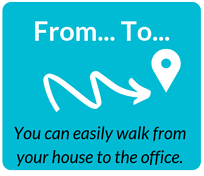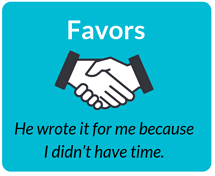
TO and FOR are prepositions that are often confused because they both have many different uses in English.
1. Let’s start with the basics…
If you are not sure about when to use TO or FOR, follow these two basic rules:

Rule 1: if there is a verb, use TO + infinitive
- I came here to talk to you.
- I study everyday to improve my English.
Rule 2: if there is a noun, use FOR
- He came for the results.
- I did this for the team.
That only gives us an idea of how to start, but there is much more.
I have researched and watched several videos to choose the least confusing approach. I think the following one is a smart approach. Ronnie puts it this way:
TO – TRANSFER / EXCHANGE
FOR – BENEFIT (GOOD)
“For you” or “To you”? People and pronouns
Should you say “I sent this letter to you” or “I sent this letter for you”? The answer is – both are possible, depending on what you mean.
- ‘I sent this letter to you’ means that, hopefully, you will receive my letter, because you are the recipient.
- ‘I sent this letter for you’ means that I did you a favor and took the letter to the mailbox, but the recipient is a third person.
So remember these two rules:
If there is a transfer of something to someone → TO
- Can you give this to her?
- I wrote the letter to her. (I wrote the letter and she will receive it soon)
If the person will benefit from a service or a favor → FOR
- This present is for him.
- I wrote the letter for her. (She wasn’t able to write it and I did it for her as a favor)
Now we are going to work on another video. I would like you to start with the “5 levels” lesson below. The lesson has five parts. Each section will give you a challenge. Each section is designed to be more difficult than the previous ones.
If you find a section easy move on to the following one, but if you find it difficult, stop it and start working on the second video. Watch it carefully and take notes. Then read the rest of this lesson and then finish the “5 levels” lesson.
Read the full script, take notes and take the quiz on this lesson here.
So let’s look at some key points:

To Indicate the Destination
- Our CEO is going to Rome tomorrow.
- We’ll head to the headquarters in a second.
- I am traveling to our branch in Bristol next month.
We use to when we indicate the destination, and usually there is movement involved. We often use verbs such as: go to, travel to, come to, head to, mail to, send to.
But there’s one common exception: you say go home, without to.

In the construction “from … to …”
- It’s about 5km from my house to the university.
- I work from 5 to 9.
To tell the time
In the USA, it is quite common to tell the time by saying the hour + the minutes.
Examples:
- 5:30 – It’s five thirty.
- 8:50 – It’s eight fifty.

However, especially in the UK, it is very common to express how many minutes there are left until you reach the next hour, once it is 30 minutes after o’clock.
Examples:
- 5:40 – it’s twenty to six.
- 8:50 – it’s ten to nine.
With the verb “to give”
We also use to with the verbs of giving, such as give, lend, pay, deliver. However, with these verbs, it’s common to use a structure without to. For example, with give, you can give someone something, or give something to someone. Both structures are possible, but the first is more common.
- So, you can say: Give the bottle to me.
- Or: Give me the bottle.
Both are possible, but the second is more common.

Giving a reason
Reason tells you why someone does something. Here, you can use to plus an infinitive or for plus a noun. Don’t use for plus an -ing verb.
Examples:
- We need to go to the shop to buy some batteries.
- We need to go to the shop for some batteries.
Again, you’re talking about why you’re going to the shop.
Function
Function tells you what something is used for, for example a tool. Here, you can use three structures: to plus infinitive verb, for plus -ing or for plus noun.
Examples:
- She developed a tool to analyse data collected at different times and places.
- She developed a tool for analysing data collected at different times and places.

Expressing the benefits of something
- Getting this certificate will be good for your career.
- Fruits and vegetables are good for your health.

Doing a favor
- He picked up the mail for me.
- I didn’t know how to write the letter and she did it for me.

Scheduling something for the future
- I set up our interview for May 4.
- I will schedule our next session for next Tuesday.
